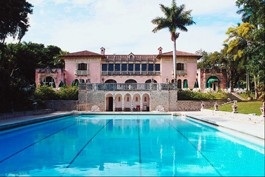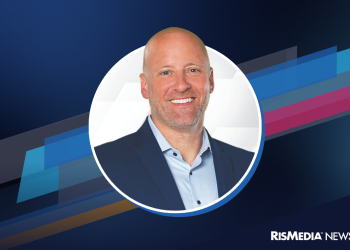 RISMEDIA, August 14, 2009-(MCT)-An advertisement for million-dollar homes in Orlando’s Baldwin Park neighborhood shows a woman soaking in a tub under the caption: “Not as rich as you used to be? Luckily, the good life has never been more affordable.”
RISMEDIA, August 14, 2009-(MCT)-An advertisement for million-dollar homes in Orlando’s Baldwin Park neighborhood shows a woman soaking in a tub under the caption: “Not as rich as you used to be? Luckily, the good life has never been more affordable.”
Custom builders, stuck with luxurious homes they have been unable to sell in the humbled real-estate market, now appear to be the ones taking a bath.
Some are trying to unload masterpiece homes at half the price they had been asking in 2007. Others are faced with having to wait for buyers for the first time in more than a decade. And still others warn that this may be the end of the speculative, high-end-home market in Orlando.
“We built this at the high end of the market, and we’re going to have to sell at the low end,” Kim Goehring, a longtime custom-home builder, said recently as he walked through what was, in 2007, the official show home of the International Builders’ Show when that giant convention was in town.
Inside the house, a curved, wooden door leads to a study resplendent with leather floors, leather inlays in the coffered ceiling, and a globe of the world centered in the chandelier. Travertine tile lines the concave ceiling of one of the two rooms in the wine cellar. A bank of custom cabinetry frames stainless appliances – and that’s in the master bedroom.
When he completed the 6,600-square-foot home on the main drag of Orlando’s Baldwin Park in 2006, Goehring said he expected it to sell within two or three months, based on demand at the time. Now, years later, Casa Teresa is a blue-light special, with its original $4 million price tag slashed in half.
About 650 homes in the $1.2 million-to- $4 million price range are for sale in the Orlando area. On average, they have been on the market a year and counting, according to records kept by the Orlando Regional Realtor Association. Sales in the million-dollar-and-up category have fallen like water from a zero-edge tub: In the first half of this year, 66 such homes sold. Three years ago, 256 sold in that same time frame.
In Central Florida’s prime havens for infill custom homes – Winter Park, College Park and downtown Orlando – more than half of the high-end homes now on the market have been offered for sale since 2006, and the majority of those are still owned by builders, said Barbara Koenig, senior vice president of New Broad Street Cos. Many of these unsold infill houses, scattered throughout existing neighborhoods, now serve as model homes for the builders.
“I think it is a good market to buy if you are going to be in it for three or four years,” said interior decorator Mark Scofield, who recently purchased a new, custom-built home in the Vias area of Winter Park for $1.2 million. It had been listed for $1.89 million when completed in 2008. “But if you only plan to be in it for a year,” he added, “it’s probably not a good time.”
Working with Kelly Price & Co. agent Audra Wilks, Scofield said he and his partner looked at about 50 homes, including five distress sales. In this market, buyers who have done their homework researching comparable sales can negotiate competitive prices, he added.
Entire collections of these empty monuments to upscale living populate Keene’s Pointe and Lake Butler Sound in the Windermere area, Windsong in Winter Park, Lake Nona in southeast Orlando, Emerson Pointe in the Bay Hill area, Alaqua Lakes and the Heathrow area in Seminole County, and Bella Collina in Montverde, according to Realtor.com.
Such exclusive communities usually require their chosen builders to construct some homes “on spec” – that is, without a confirmed buyer – so they’re available as walk-through marketing tools.
The glut of high-end homes, most of which are custom-built, is not unique to Orlando. Nationally, sales of homes priced at $750,000 or more have stalled, and the backlog has doubled from a 19-month supply in 2007 to a 41-month supply this year, according to the National Association of Realtors.
A number of forces converged against the luxury market starting two years ago: Home prices began dropping; potential buyers were unable to sell their current homes; and lenders began charging high interest rates on jumbo loans, the mortgage of choice for high-end houses.
“It was like a train wreck,” said Koenig, whose focus is Baldwin Park. “We have done everything we could to market the last nine custom homes.”
Custom builder Rial Jones said that, for the past decade, all of the spec homes he built sold on completion – at least until now. The Tapestry mansion he completed last year in Lake Butler Sound – with two stone-carved lions, both of which are architectural antiques imported from Italy – still awaits a buyer.
Larry Fleming said he had several custom projects under way in Seminole County’s Veramonte development as late as last year. Now he’s stuck with at least one of the houses and is asking $1.4 million for the 5,800-square-foot home, which had been listed for $2 million. After lenders virtually stopped approving jumbo loans last September, Fleming said he felt fortunate to sell what had been a $3 million home, in Windsong, for $1.8 million.
Every month that a custom home sits unsold can cost a builder as much as $10,000 or more in construction-loan interest, taxes, maintenance and other carrying charges. Many builders have been forced to ask for loan extensions from banks, but lenders are increasingly reluctant to extend loan terms, said Fred Tibbs, co-owner of Rex-Tibbs Construction, which has cut the price of one slow-selling Orlando home from $2 million to $1.5 million.
Sensitive to the now-watchful eyes of federal regulators, lenders have started turning down custom builders seeking loan extensions, according to members of the Master Custom Builders Council of Orlando.
“I’m hearing a lot of stories from members that the banks are becoming much more aggressive with them, just because the loans have been on the books for so long,” said Keith Fields, president of the local council.
No one has gone out of business, “but we’ve all gone back to our roots,” said Fields, whose company has shrunk from 12 employees to just him and his wife during the past two years.
“You literally could not build these houses for the price they are selling for,” he said.
(c) 2009, The Orlando Sentinel (Fla.).
Distributed by McClatchy-Tribune Information Services.










